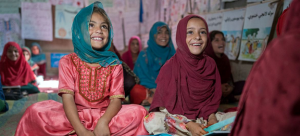Morczinek will accelerate the continuous scaling of Blacklane by driving growth through capacity optimization and the use of finance to drive strategy and localisation.
BERLIN, May 04, 2023 (GLOBE NEWSWIRE) — Today, global chauffeur service Blacklane announced that it has appointed Ebony S. Morczinek as the new Chief Financial Officer (CFO), effective immediately. She will report to Blacklane CEO and Co–Founder Dr. Jens Wohltorf, and is charged with optimizing the finance functions with a focus on enabling global and local operational management to drive Blacklane's growth. With more than 20 years of experience directing all facets of economics, operations, and executive–level business administration for top–tier organizations, Morczinek brings proven leadership and valuable insights to the Blacklane team.
Most recently, Morczinek served as the Chief Executive Officer (CEO) Europe for global meal kit provider Marley Spoon, where she was recognized for doubling gross revenue while leading integrated operations across six countries in Europe. Before that, she was the Chief Financial Officer of the Global Services division at Likewize (formerly Brightstar Corporation), where she spearheaded IPO readiness for the global telecommunications company. Stations at companies such as Citigroup and Lufthansa complement her career, giving her experience in working with large organizations as well as start–ups.
"I am thrilled to join the Blacklane team and further establish our leadership position in the premium mobility and travel industry," said Ebony S. Morczinek. "My goal is to support Blacklane's growth trajectory in a sustainable way, while having a keen eye on the business opportunities which will come through markets and our investor community. My thanks go to Jens and the Board for the trust they have placed in me as we drive Blacklane's success story based on a common mission to create true peace of mind by delivering perfect experiences around the world to inspire a better future."
"We are continuing to grow Blacklane's executive team and it fills me with great pleasure to welcome Ebony to our group," says Dr. Jens Wohltorf, Co–Founder And CEO of Blacklane. "Coming out of a highly successful period where we quadrupled revenue in 2022 year–over–year and won a significant investment from Gargash Group and Mercedes–Benz Mobility, in 2023 we plan to introduce innovative products as well as expand and open markets. Ebony's expertise in a wide range of strategic operational and financial tasks will bring Blacklane to the next level as it continues to revolutionize our industry."
ABOUT BLACKLANE
Blacklane's global chauffeur service brings peace of mind to travelers moving through a fast–paced world. The crew's dedication to safety, reliability, and smart technology places Blacklane at the forefront of a new era of stress–free travel. Since 2017, the company has been carbon–neutral, combining a five–star guest experience with care for the planet. Upgrade your travels on Blacklane's mobile apps or website.
For Blacklane global media inquiries, please contact:
Blacklane GmbH
Radmila Palov
+49 157 80 67 4435
A photo accompanying this announcement is available at https://www.globenewswire.com/NewsRoom/AttachmentNg/4536f7bf–c270–42da–abde–ac36d5f5ebd6

GLOBENEWSWIRE (Distribution ID 8831916)







